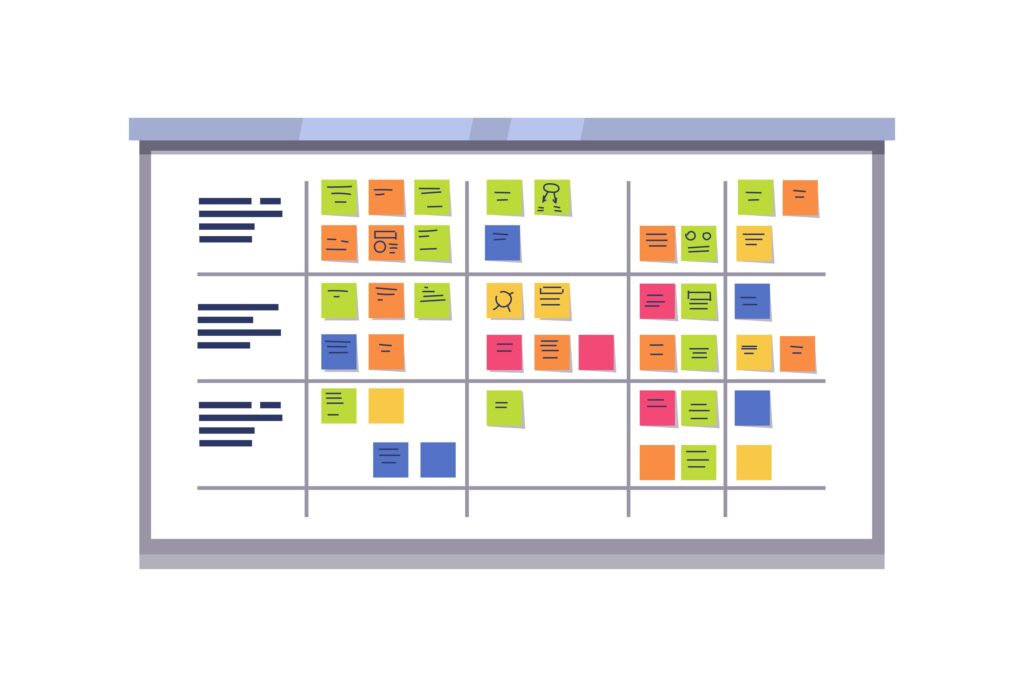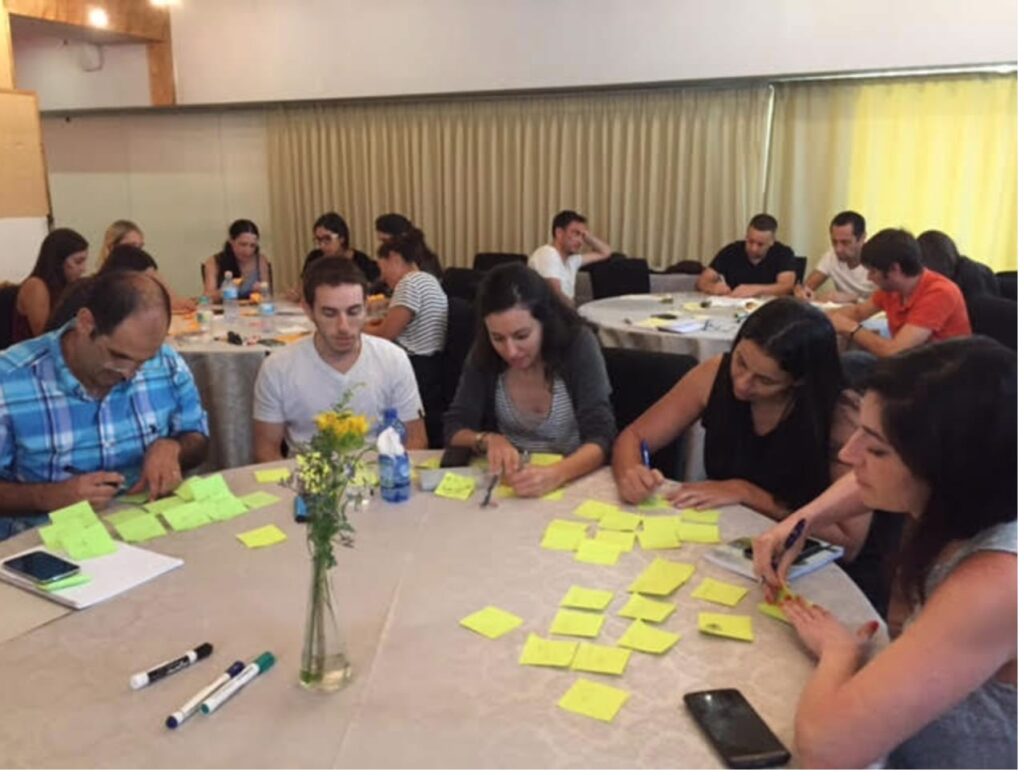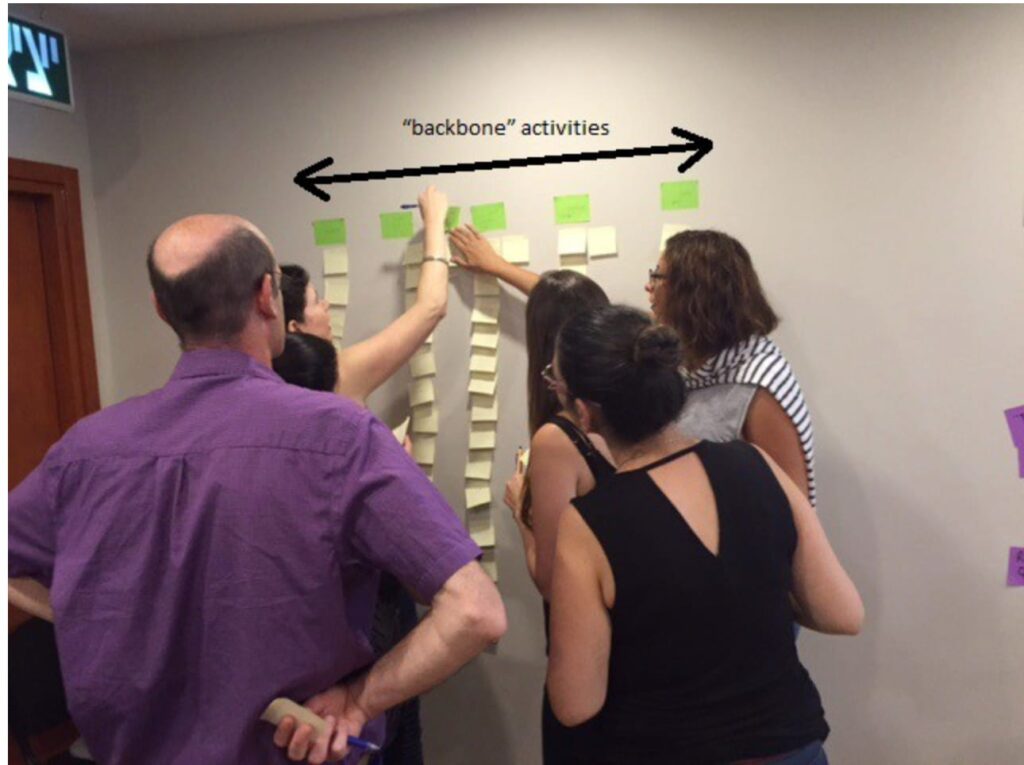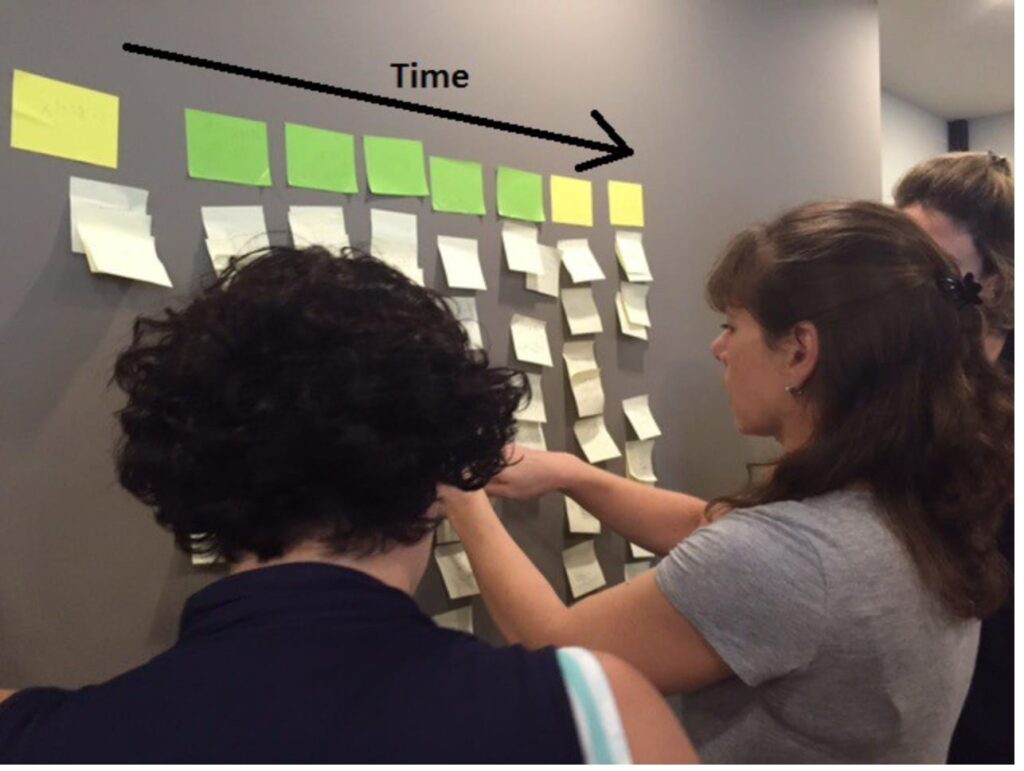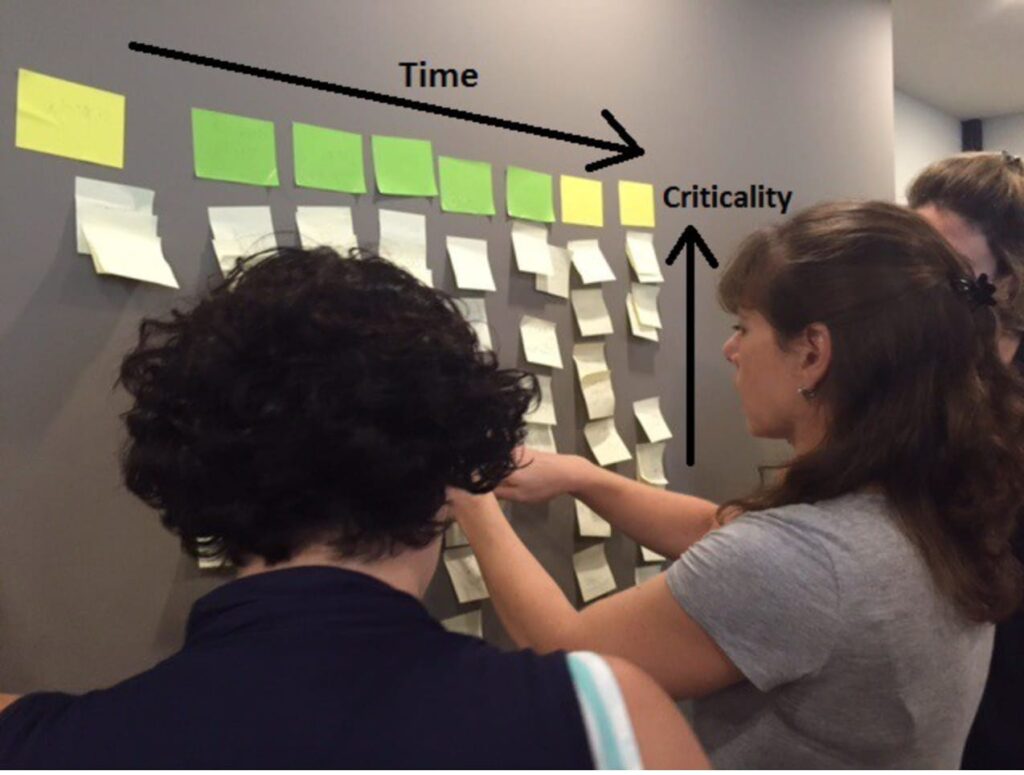scrumboard
"wake up in the morning" game
The exercise is interactive and is raising the energy levels of the participants. To my surprise the exercise also serves as a great ice breaker and team builder since it creates opportunity to get to know each other better by exposing each other to morning habits and personal context, such as where do I live, who prepares breakfast for the kids, whether I’m used to doing Yoga or never miss my favorite podcast…or any other thing people choose to do in the morning – so it becomes really funny and fun.
Here are the steps I take to run the exercise:
step 1 - individually list the morning activities (5 minutes)
I ask people to write on sticky notes the activities they did from the moment they woke up until they reached the office, as many as they can.
It should be one activity in each sticky note and should be done individually (unless people woke up together that morning …)
step 2 - collaboratively grouping the activities (5 minutes)
I choose a space in the room with enough place on the wall. In teams of up to 7 people I ask people to take their notes and group them together under common topic that will be their title. It’s a group of activities with a common goal, for example, washing and refreshing can include activities such as brushing the teeth, taking a shower, going to the toilets, etc.
Each team should place their sticky notes on the wall and organize them in the groups with the topic as their title. The titles are the “backbone” activities.
step 3 - order the group of activities by time (3 minutes)
I ask the teams to order the activities from left to right sequentially, in a way that the order makes sense as a story with a beginning, a middle and an end (for example: wake-up, washing, breakfast, home arrangements , kids, travel, reach the office..).
step 4 - order the activities by criticality (5 minutes)
Now I ask the teams to prioritize the activities in each group by criticality ordered from top to bottom, so that important activities are on top.
Briefing on this step:
Prioritizing is difficult when there are no guidelines, such as a certain goal we wish to achieve with our learning. For example, if our target customers are 6 to 12, or 14 to 18 or teachers — the priorities will probably be different, different activities will be considered critical for each target group. Define the goal/lesson learning so it is easier to determine the priorities.
step 5 - drama! (5 minutes)
And now for the drama.. I tell the group:
- Imagine you had a very important meeting in the morning that you just cannot miss or be late to. Unfortunately, the alarm clock didn’t do its job and you woke up late and have only 15 minutes to get out of the house
What do you do? Which part of the morning routine will you drop to fit in the minimal time you have?
Now I ask the team to draw a horizontal line through the activities so that all the activities they choose to do in such a morning are above the line and all the rest under the line.
They need to reach the office safely and be on-time with the minimum activities as possible.
final briefing
The exercise demonstrates the following important concepts:
- With the constraint of time our aim is still to realise the full “value” of getting on time to the office. In the process of minimizing the activities, we removed many of them in each step and left the process very thin and lean but still end-to-end.
- Since we have a constraint of time, as we eventually want to be fast which means minimize the time to reach value. in many cases we will go too deep in a single step and not realise the full end-to-end value. in this exercise we demonstrate how it should be done across the map and how in every increment we build we have the full end-to-end.
- We don’t invest equally in each step – in some steps we left only one activity and in some we left more, depending on the step. Some steps where even entirely removed.
- Choosing the depth of each step is easier when the full picture is available since the alternatives are visible.
- Focusing on a single activity but in the context of end-to-end value helps development teams better understand the scope of the requirement. For example, preparing breakfast in the context of getting out of the house in 15 minutes is totally different from preparing breakfast for the family on a vacation morning. Communicating effectively the context helps to make the scope more precise and to trim the less important parts of the scope.
** Note: originally designed by Jeff Patton. Published on Agilesparks
